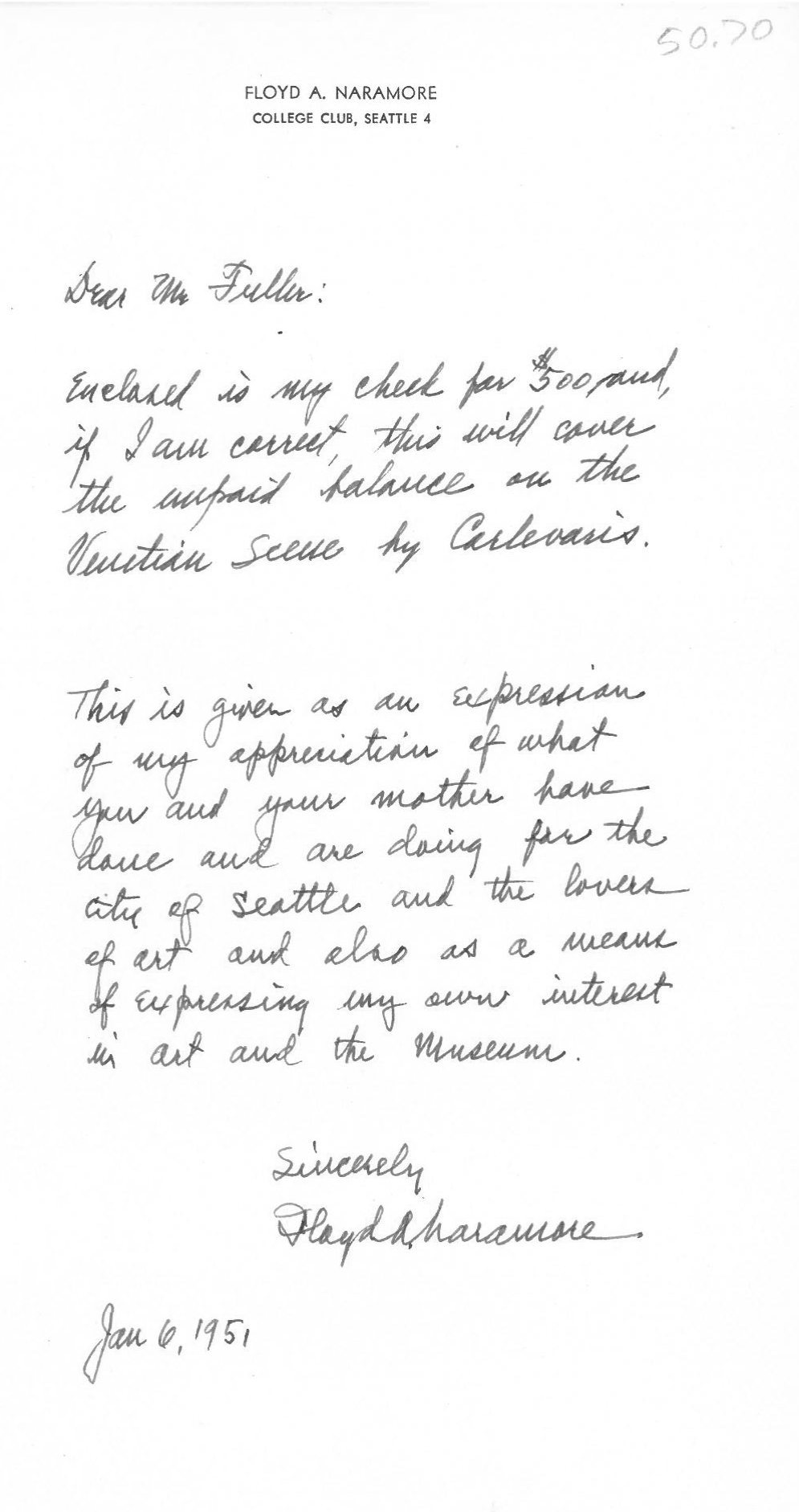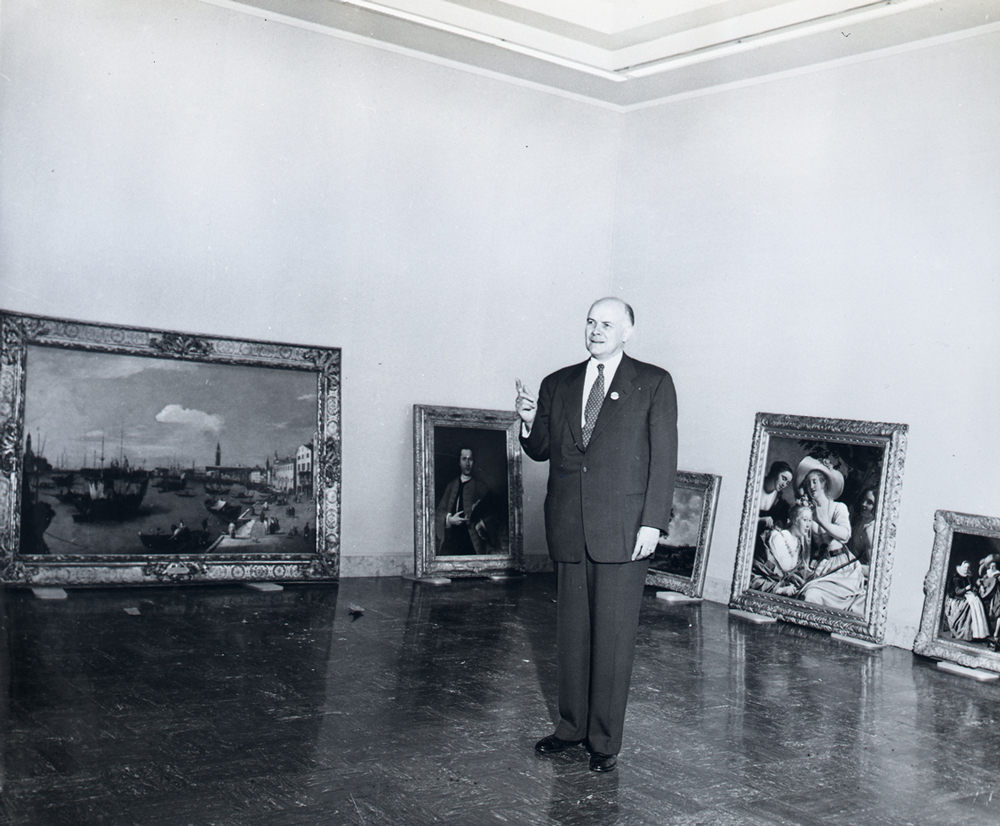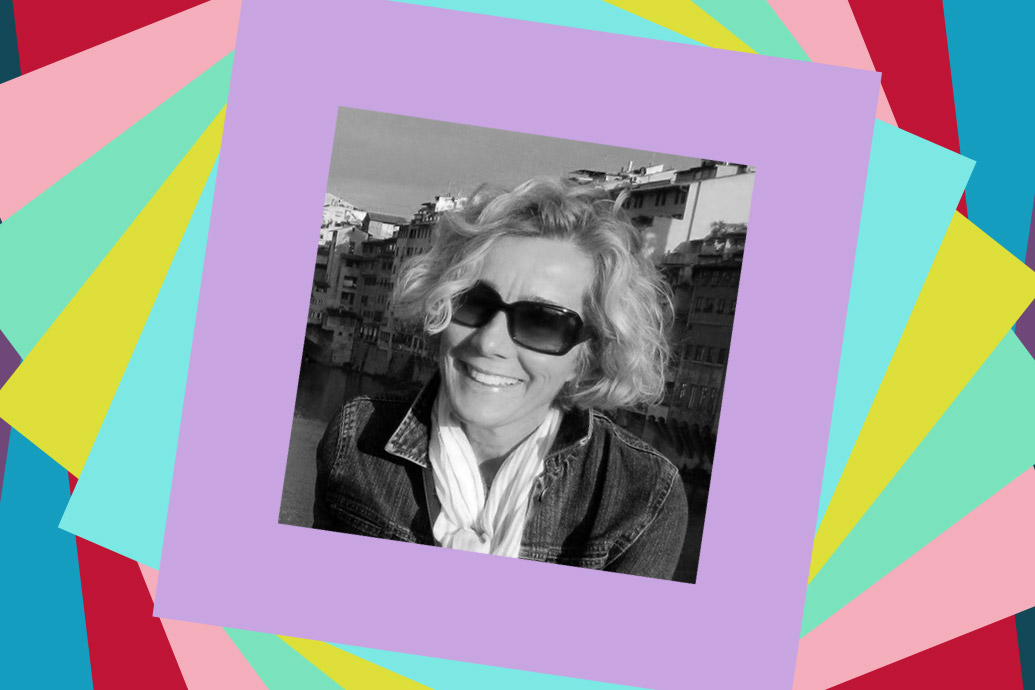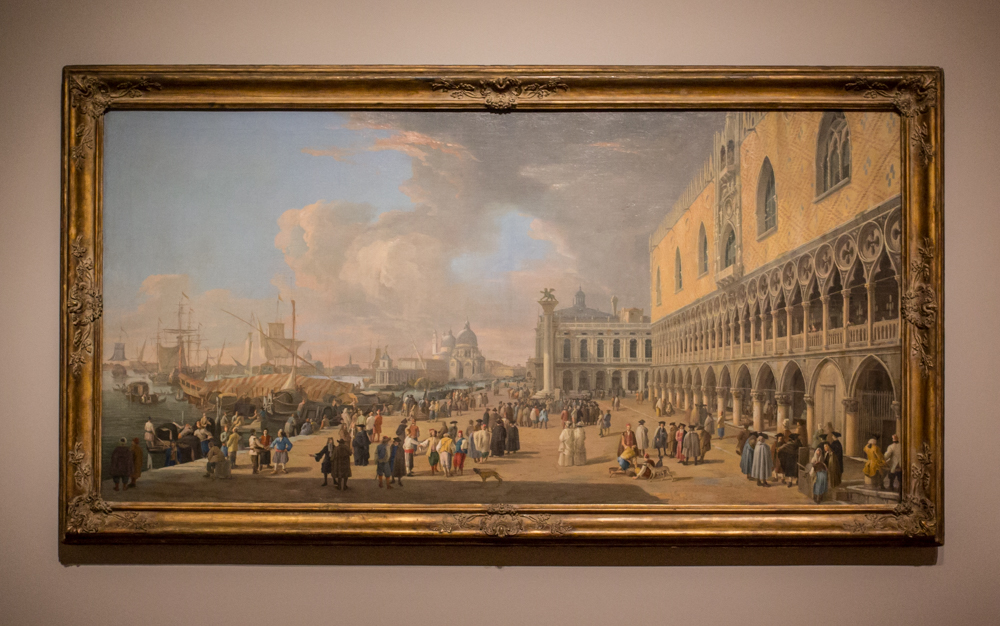Object of the Week: The Doge’s Palace and the Grand Canal, Venice
The unique collection we have at SAM largely reflects the specific art interests of a series of generous donors. Much of the museum’s African and Modern art, for example, came as transformational gifts, adding prominent facets to the identity of the collection. The European paintings at SAM offer more great stories of generosity and collecting passions.

The Doge’s Palace and the Grand Canal, Venice, a fabulous Venetian view painting by Luca Carlevariis (1663-1729), was purchased for SAM with funds from one local art patron, Floyd A. Naramore. In a letter dated January 6, 1951, Mr. Naramore writes to SAM director Richard Fuller that the painting is “given as an expression of my appreciation of what you and your mother have done for the city of Seattle and the lovers of art and also as a means of expressing my own interest in art and the museum.” In the letter, Mr. Naramore mentions a gift of $500—the final installment in a total payment of $1,800 to David M. Koetser Gallery, New York. The market for Carlevariis paintings has changed quite a bit in the last 60 years: In 2011 a similar view by Carlevariis, of a comparable size, sold at a Christie’s auction for just over $4 million!
The artist was a kind of ambassador for Venice in his art. Born in the small town of Udine in 1663, Luca Carlevariis moved to Venice in 1679 and there found a city that truly inspired him. He produced etchings and paintings that focused on the then-and-now touristy spots near Piazza San Marco. His vedute, or view paintings, became popular as souvenirs for Northern Europeans visiting Venice as part of their cultural education. This 18th-century phenomenon, known as the Grand Tour, brought Carlevariis a steady supply of patrons who would purchase his works like we (or our parents) would a postcard. Carlevariis was one of the earliest painters of Venetian vedute, although the later Canaletto is the name most popularly associated with them.
SAM has an insightful webpage on The Doge’s Palace and the Grand Canal, Venice that points out several monuments included in the view, such as the Lion of St. Mark, the basilica of Santa Maria della Salute, the Biblioteca Marciana, and of course, the Doge’s Palace. Also featured on the page is an introduction to the fascinating world of the Grand Tour.
When The Doge’s Palace and the Grand Canal, Venice entered SAM’s collection, in 1950, it marked the beginning of an especially important decade for the growth for the European paintings collection. The relationship the museum developed with the Kress Foundation was central to that growth.

Samuel H. Kress (1863-1955) built a family fortune in retail by founding a five-and-dime store and building it into a national chain. An art lover, Kress began to seriously collect Italian paintings in the 1920s, and also became devoted to philanthropy. The Kress Foundation, as part of its mission to help small art collections during the hard economic times surrounding the Great Depression, developed something called the Regional Galleries program that served the Foundation’s desire to get the whole Kress Collection on view and would also disperse the artworks democratically around the country. SAM was chosen as one of the 18 regional museums to receive paintings from the Kress Foundation. In the 1954 photo above, Dr. Fuller plays curator and arranges an installation of the Kress paintings at SAM’s Volunteer Park building. Behind him, you’ll spot another Venetian veduta that graces SAM’s collection, Bacino di San Marco, attributed to the Workshop of Canaletto.
—Jeffrey Carlson, SAM Collections Coordinator

